Some Systems Stuff
- Wireshark/ethereal.
- /sbin/ifconfig
- reports and configures network interfaces.
-
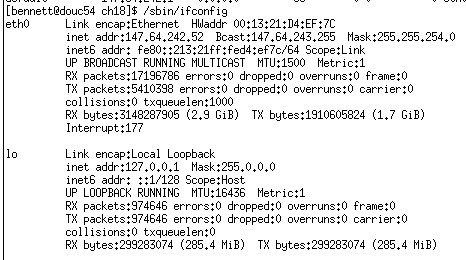
- By anding the target ip and the netmask, we can determine if the
target is on the local network or not.
- Note, we also see the Maximum Transmission Unit (MTU) for the
associated network.
- Netstat
- Provides information about network connections.
- With no flags gives information about active connections.
-
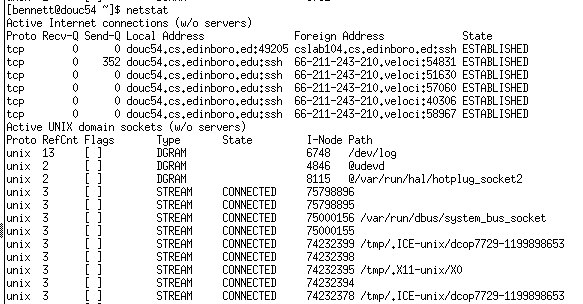
- netstat -r
- Shows the routing table for the machine.
-

- Routes are added and deleted with route command.
- The DEFAULT route tells where to send unknown network packets to.
- Another example from braveheart.
-

- In this case, if the network part is 10.1.1. send it to eth0
- If the network part is 147.64.242.x send it to eth0
- The default route is to 147.64.242.1
- Setting this all up.
- From files. Look at braveheart.
- From DHCP.
-
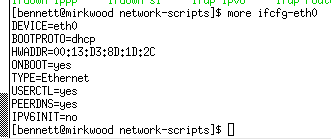
- ARP - address resolution protocol.
- IP address to lower level network translation.
- For two hosts on the same network
- Or a host and a router.
- I know the IP address I want to talk to.
- I send an ARP broadcast asking who has the ip address
- Whoever has it responds to the broadcast.
- Example wireshark (ethereal) output.
- My machine is at 192.168.1.101
- The windows machine is at 192.168.1.100
- /sbin/arp reports the arp table.
- Entries time out (looks like about 10 min right now)
- A screenshot of the command
-
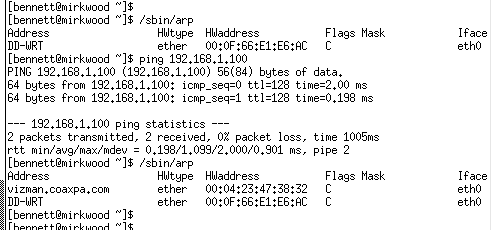
- A screenshot of ethereal capture.
-

- The request (arp packet)
-
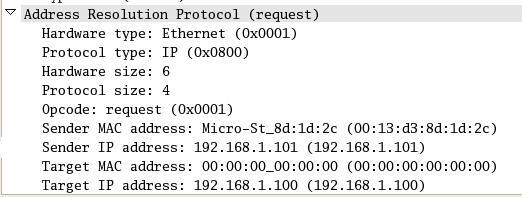
- The reply (arp packet)
-
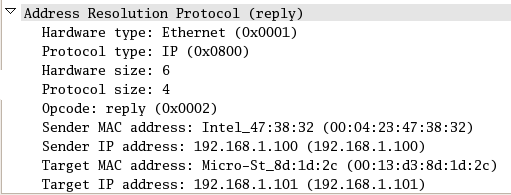
- NAT - Network address translation
- Allows my router to pretend my machines are connected to the network.
- The router on a private network interface can perform this service.
- It matches ip addresses/tcp port pairs
- And forwards the connection.
- It does this by forming a table of ip/port on both sides.
- On a packet transmission from my side
- It is sent to the router.
- The router records source ip and port
- It establishes a connection on a given port and sends the packet.
- On a packet from the outside.
- It is to a given port on the router.
- It looks to see if this port is matched, and if so sends it on to the registered machine.
- On an unknown connection from outside.
- The router maintains a table of allowable connections.
-

- If I receive a connection on one of those ports, it is forwarded to the listed machine.









